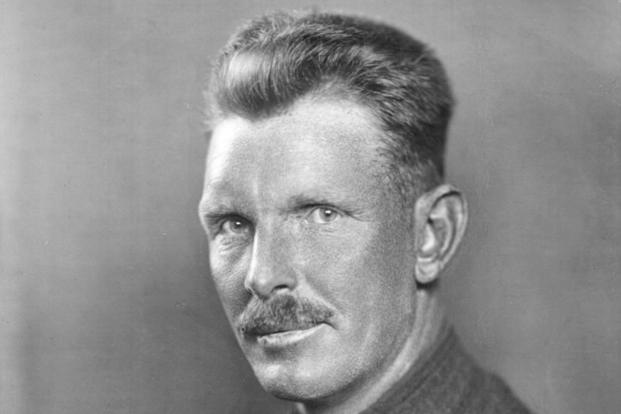They were Appalachian farm boys and crack shots who were distantly related by marriage, and now they are both Medal of Honor recipients for their "above and beyond" actions in separate wars.
Army Sgt. Alvin C. York, believed to be the most highly decorated American soldier of World War I and made famous in a 1941 blockbuster movie, and Army 1st Lt. Garlin Murl Conner, one of the most highly decorated soldiers of World War II, first met when York came to the parade for Conner's homecoming in May 1945 and spoke at the Clinton County Courthouse in Kentucky.
That was where Pauline Conner, or Miss Pauline as she is known in the county, first saw the man who was to become her husband. He was all of about 5-foot-6 and maybe 130 pounds -- "probably," she said with a laugh at a Pentagon briefing Monday.
Pauline, who was Pauline Wells at the time, said her future husband didn't make a good first impression. She recalled with a smile turning to her mother, Tressie, and saying "my God, Mama, that little wharf rat couldn't have done all of what they said he'd done."
On Tuesday, Pauline Conner will accept the posthumous award of the Medal of Honor for her husband, who died in 1998 at age 79, from President Donald Trump at a White House ceremony.
Retired Army Col. Gerald York, the late Alvin York's grandson, is expected to attend, said Luther Conner, a lawyer in Albany, Kentucky, and a second cousin to the Conners.
Luther Conner, who did some the legal work that resulted in the upgrade of the DSC, said he was also related to the Yorks. The maiden name of Geneva Conner, his grandmother, was Geneva York, Luther Conner said.
"Yes, I knew Geneva," Pauline Conner said.
She said that Alvin York and her husband became friends and "we visited each other. I thought he was a nice person," she said.
York lived about 15 miles down the road from the Conner home in Albany, Kentucky, past Cedar Knob and just across the state line in Pall Mall, Tennessee.
Alvin York was about as taciturn as her husband, Pauline Conner said. When they were together, neither said much around her, she said. They would go off together, sometimes into a field, to talk, she said.
"Then Sgt. York got sick and we didn't visit much," she said.
Both York and Conner were farmers and would sometimes meet at livestock sales and at national holiday parades and festivals, Luther Conner said. Sometimes, York would go with Murl to 3rd Army Infantry Division reunions, Luther Conner said.
"He was revered, of course," in the hill country along the Tennessee-Kentucky border, Luther Conner said of York. And that was before they made the 1941 movie "Sergeant York," starring Gary Cooper.
York's Medal of Honor citation said that in the Meuse-Argonne offensive of October 1918 he attacked German lines, killing at least 25 enemy soldiers and capturing 132.
According to Murl Conner's citation, on Jan. 24,1945, he spooled wire to a phone, went out in front of his company's lines and directed artillery fire on his position to break a German tank offensive.
One of the clauses of a resolution passed by the Kentucky legislature 2004 to support the upgrade of the DSC said that:
"WHEREAS, on June 20, 1945, Lieutenant Conner was awarded the Croix de Guerre, the French Medal of Honor, that was also awarded to Sergeant Alvin C. York, America's most decorated World War I soldier, who was a friend of Lieutenant Conner and lived a few miles from Lieutenant Conner's home on the Kentucky-Tennessee border."
-- Richard Sisk can be reached at Richard.Sisk@Military.com.














